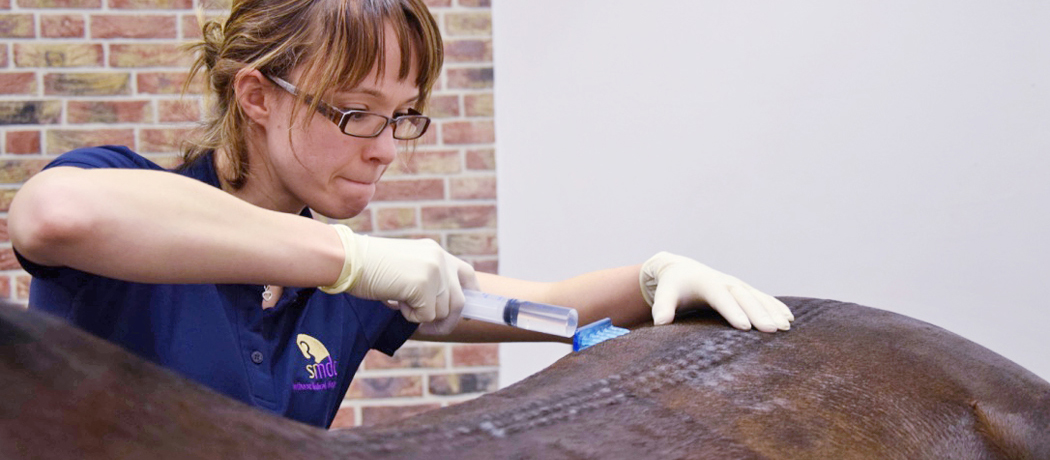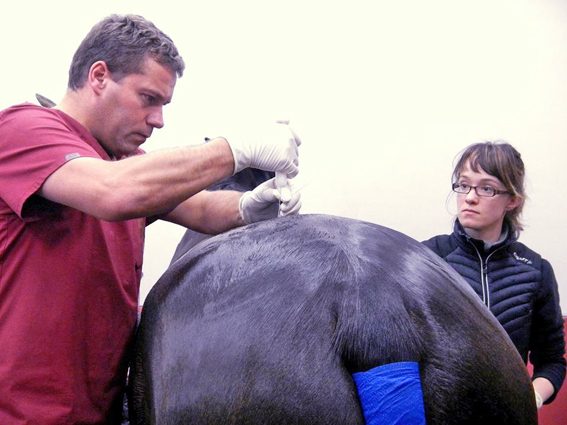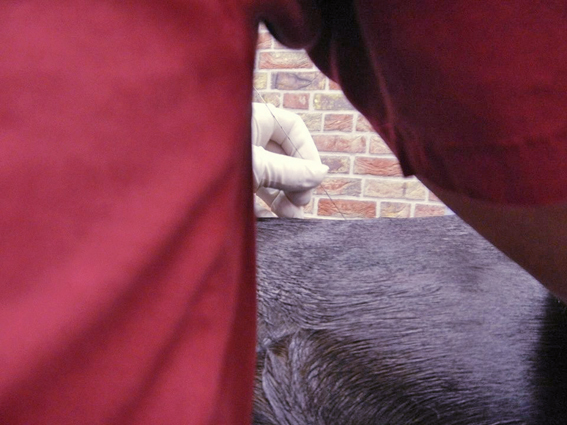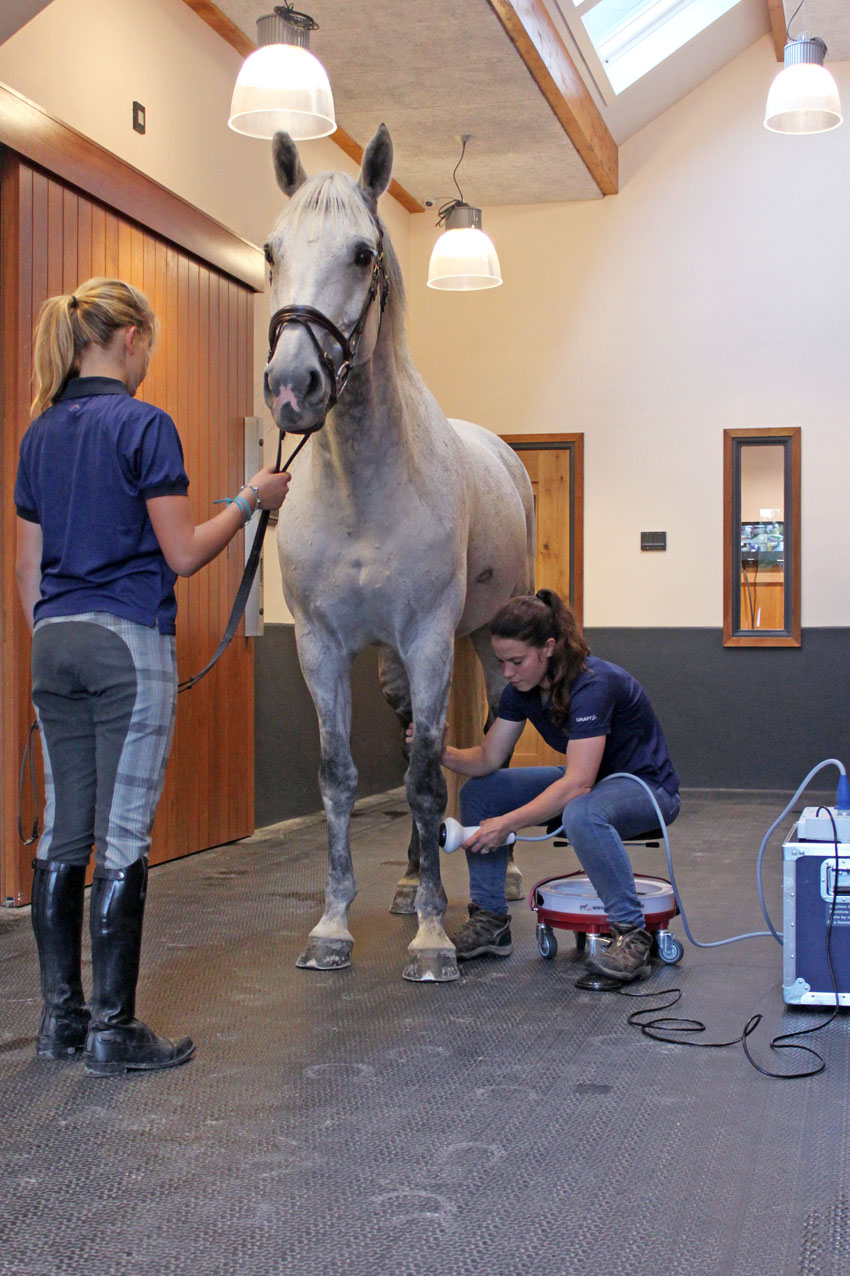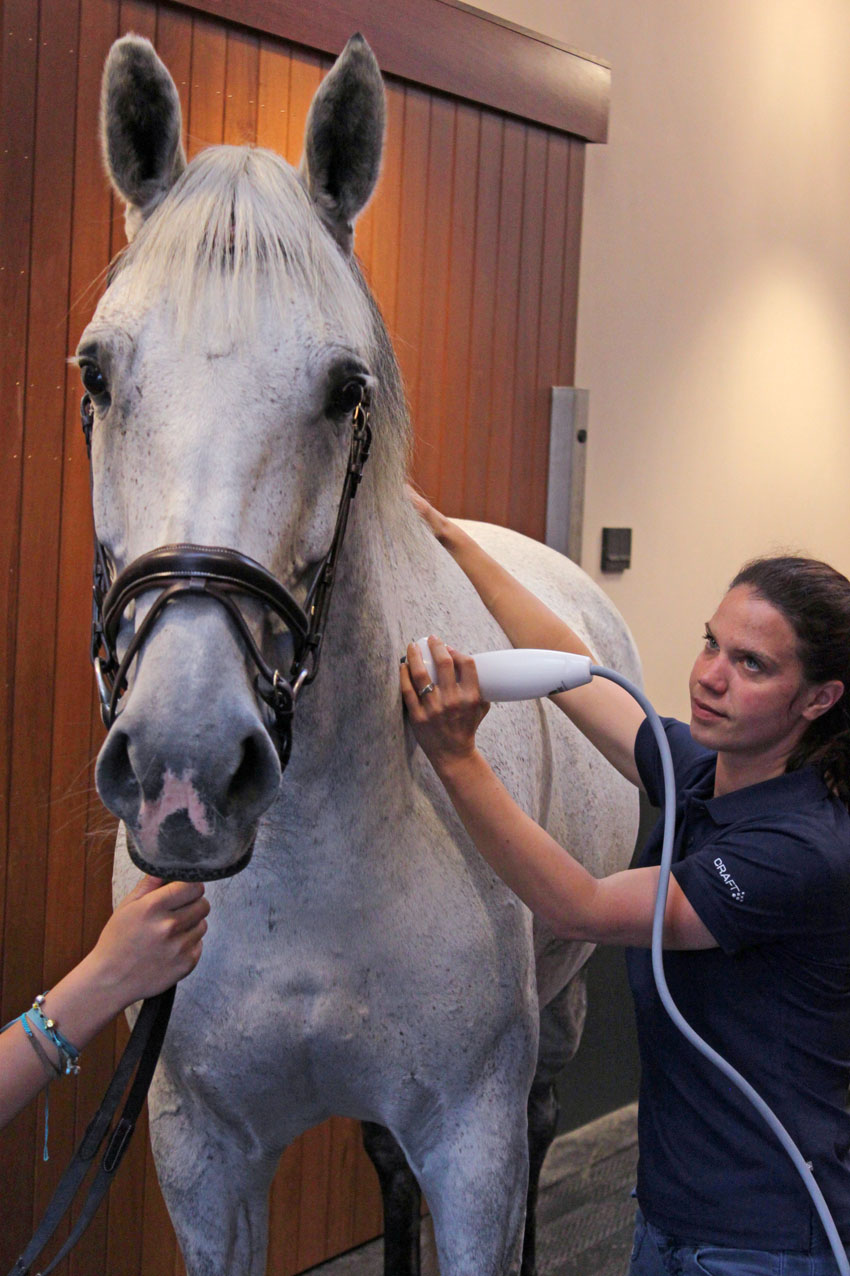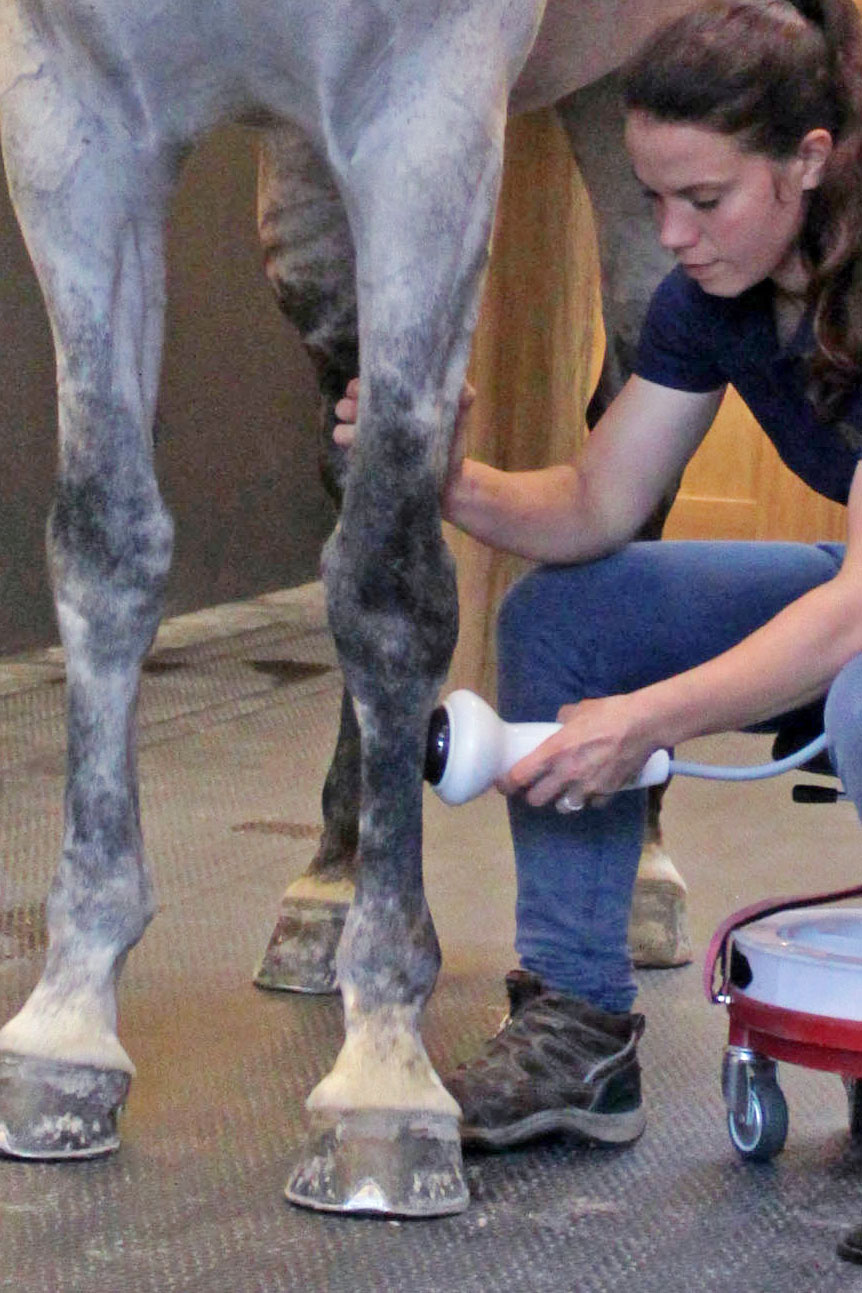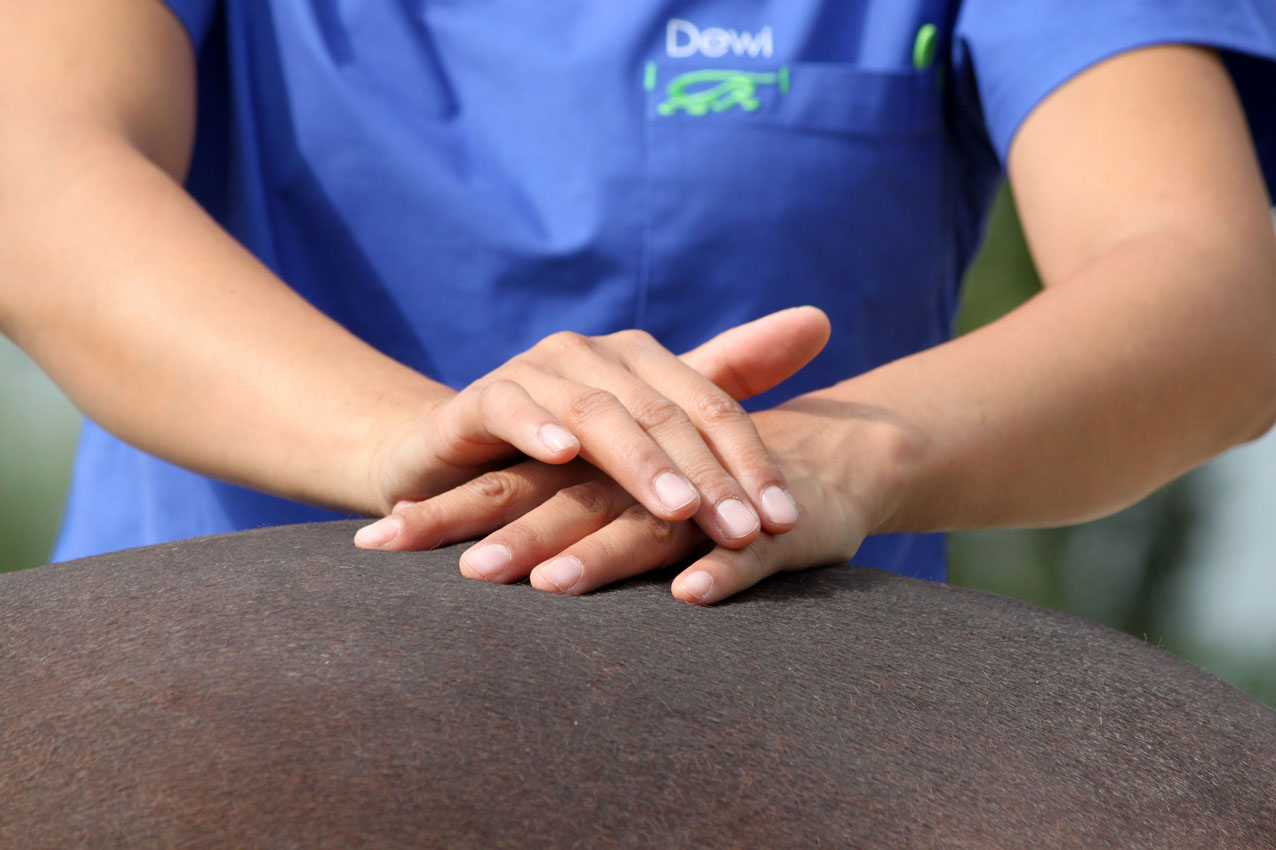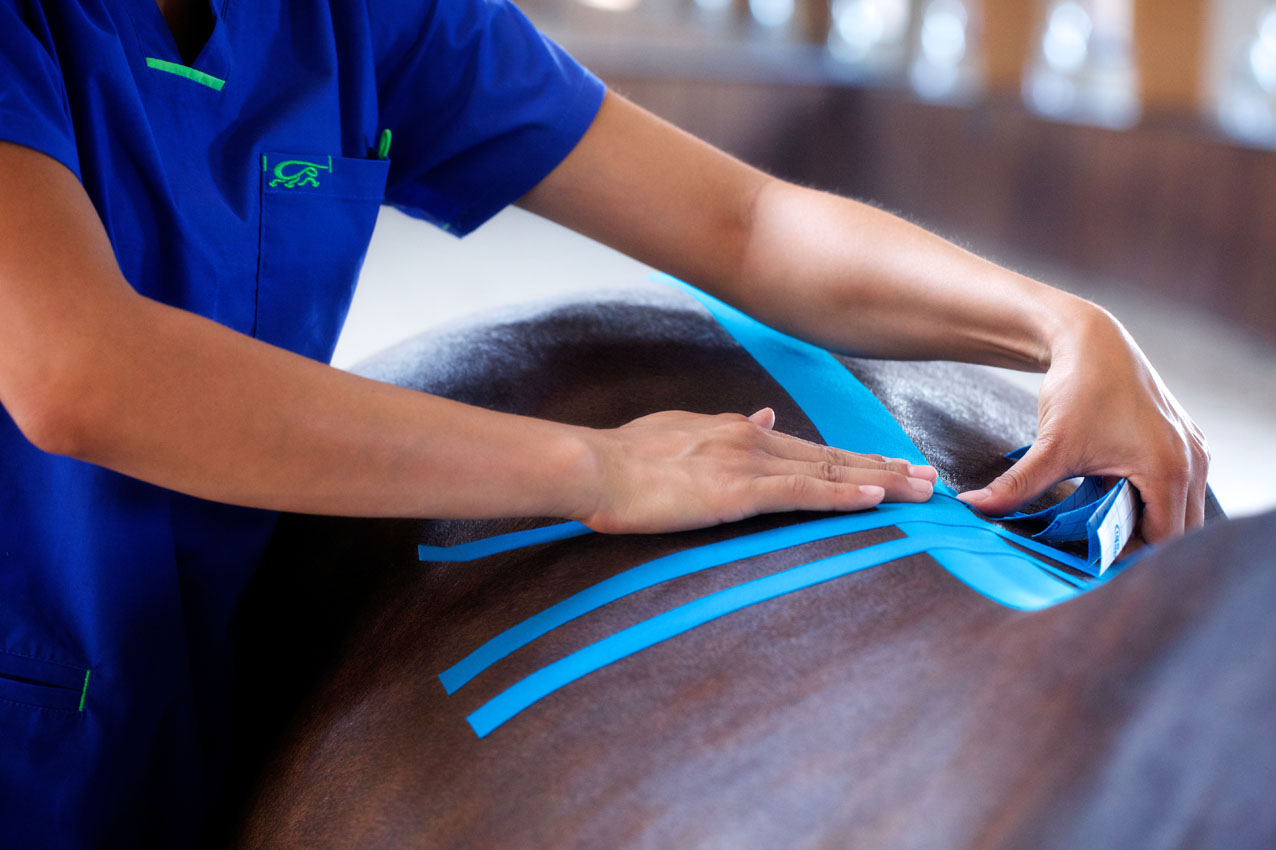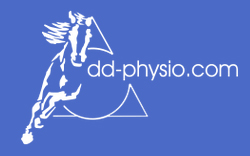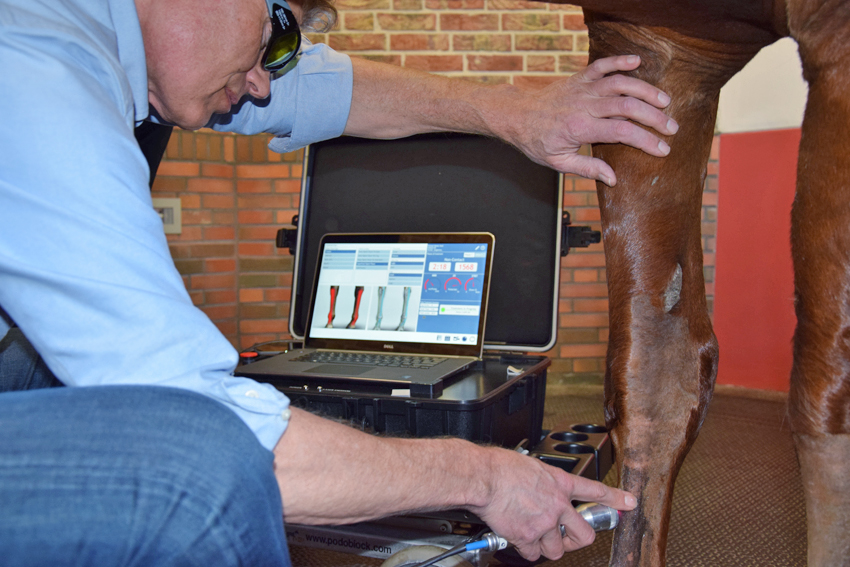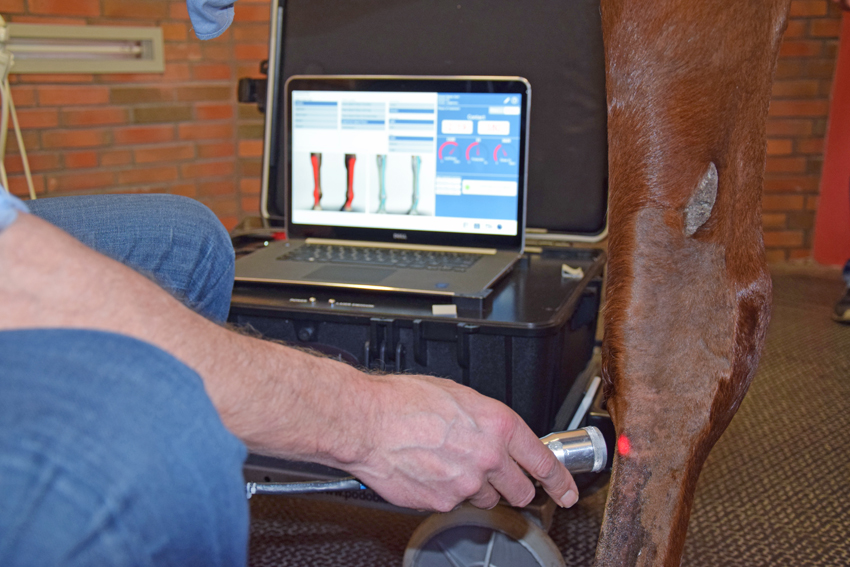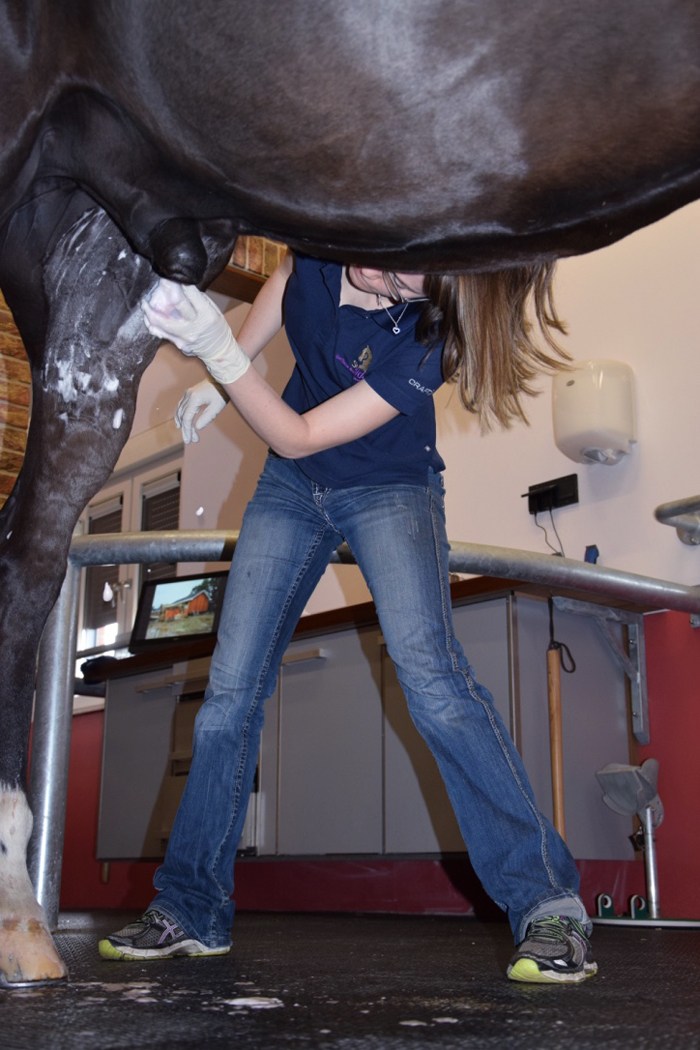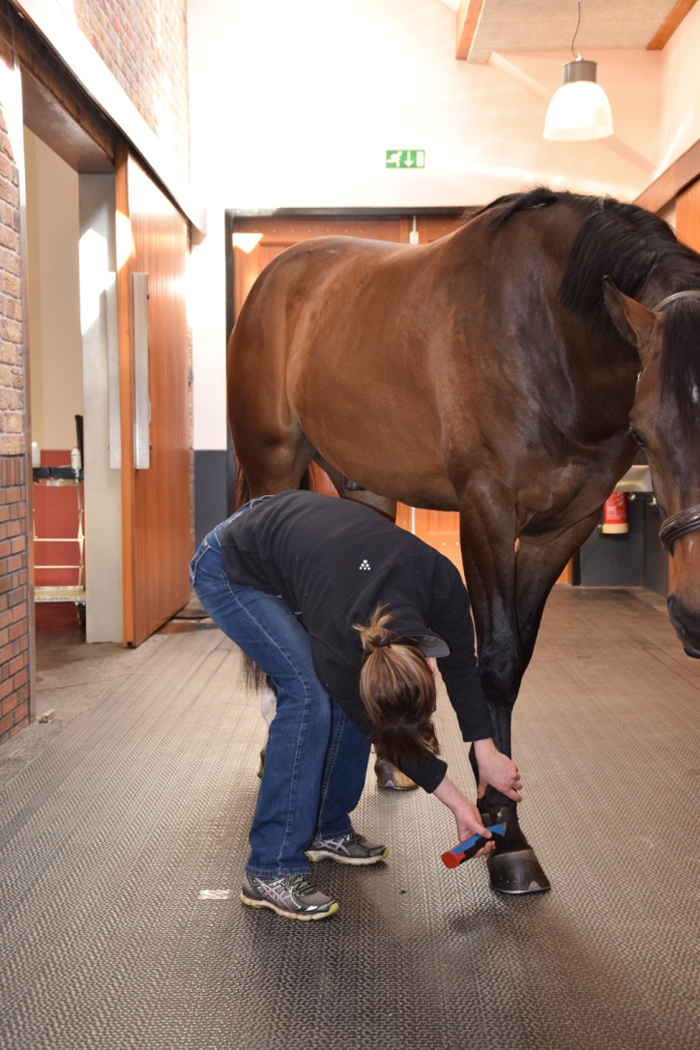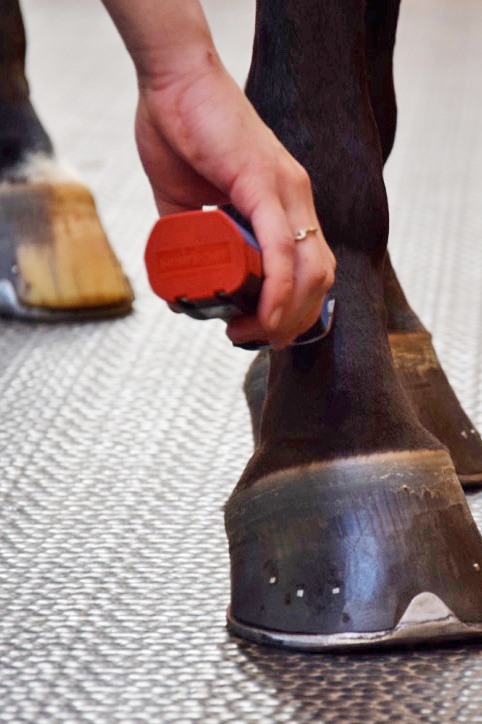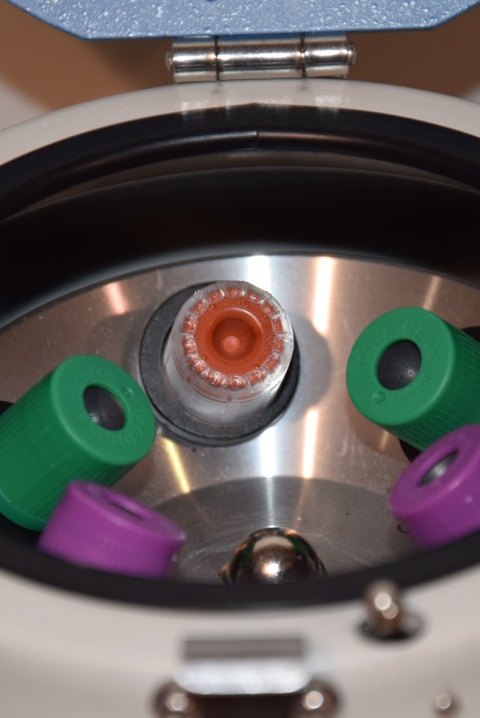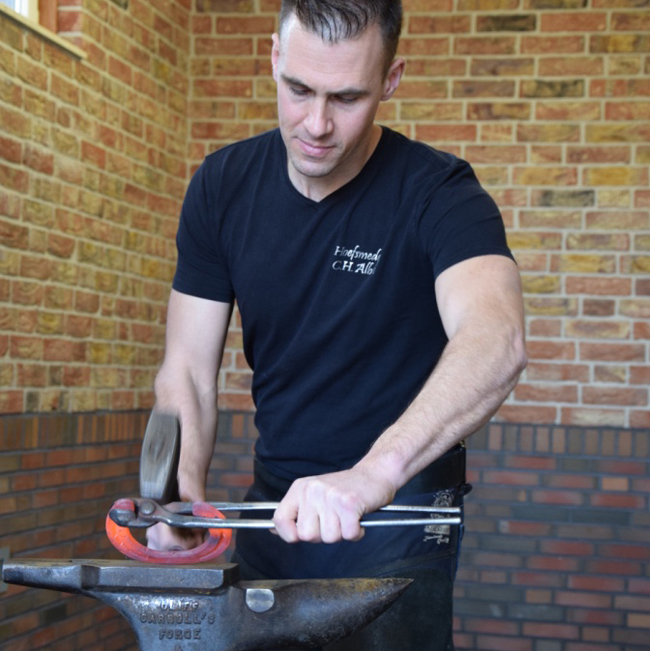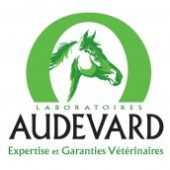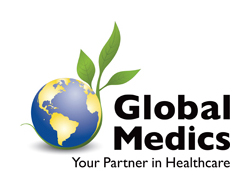Treatment options for neck, back and pelvis related pathology
Mesotherapy
Mesotherapy involves injecting small amount of medication into the mesoderm of the skin via small needles. This technique is most commonly applied to treat the equine spine. Via the “gate control mechanism”, the nerves responsible for pain perception are interrupted. The purpose of the mesotherapy is to stop the viscious cycle of pain and restricted mobility in a certain area (for example neck or back stiffness). By stopping the viscious cycle, the horse is able to move normally again which in combination with other therapies, like physiotherapy/chiropraxis, contributes to the recovery.
Ultrasound Guided Injections (USGI)
At SMDC horses with spine related issues are treated by USGI every day. Ultrasound provides an accurate diagnosis and this technique allows for optimal treatment of the specific underlying problem. The technique needs experience in guiding a needle into the right position under ultrasound guidance.
Focused Shockwave Therapy (Extracorporeal Shockwave Therapy or ESWT)
Focused shockwave is a proven treatment modality both in horse and humans. Tendons, ligaments and especially the area of transition between bone and ligaments are areas in which shockwave therapy is most commonly indicated. Our team has extensive knowledge and experience with both the indication for shockwave therapy as well as the expectant results. Research has shown us, using the UTC scan, that shockwave therapy results in increased quality of repair and decreased the chance of lesion reoccurrence. With our focused shockwave equipment, Versatron, it is also possible to treat axial skeleton disorders.
Physiotherapy and Chiropraxis
To support veterinary treatment, we regularly recommend the use of physiotherapists and/or chiropractics to improve flexibility, strength and coordination. Click here to read more about the physiotherapist team that we collaborate with: www.dd-physio.com
Treatment options for tendon and ligament injuries
The specialists of SMDC are very experienced in treating tendon and ligament injuries. After the precise diagnosis (by clinical, ultrasonographic and UTC examination) a wide variety of treatment options are available at SMDC. Experience and knowledge of the actual stage of the injury are both important aspects that will influence the best choice of treatment options.
Focused Shockwave Therapy (Extracorporeal Shockwave Therapy or ESWT)
Focused shockwave is a proven treatment modality both in horse and humans. Tendons, ligaments and especially the area of transition between bone and ligaments are areas in which shockwave therapy is most commonly indicated. Our team has extensive knowledge and experience with both the indication for shockwave therapy as well as the expectant results. Research has shown us, using the UTC scan, that shockwave therapy results in increased quality of repair and decreased the chance of lesion reoccurrence. With our focused shockwave equipment, Versatron, it is also possible to treat axial skeleton disorders.
Laser Therapy
The last decade laser therapy has proven to help significant in the healing process of soft tissue lesions in equine medicine. It activates several biological mechanisms: accelerates tissue repair and cell growth, accelerates wound healing, reduces fibrous tissue formation, is anti-inflammatory, provides pain relief and increases vascular activity resulting in a better and faster healing process.
SMDC works with the currently most powerful and state of the art equipment: the RLT (Regenerative Laser Therapy) Vet laser (Sound company). This is a class IV ND-YAG-laser. This machine is used at SMDC for treating muscle, tendon and ligament injuries and in rehabilitation programs.
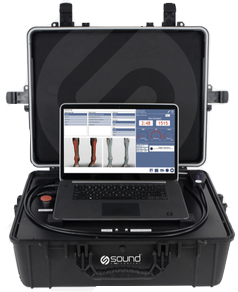
Regenerative medicine
In the last decade new and innovative treatments have become available in equine medicine. IRAP, PRP and Stem Cells are natural products collected from the horse’s own body and used to stimulate the horse’s ability to heal. Currently there is a lot of research looking into these new treatments and the SMDC stays up to date with the latest technologies.
Intra-articular treatments (joints)
Inflammation of the joint (synovitis/arthritis), the joint capsule (capsulitis) and/or injury to the joint cartilage can all be the reasons to treat a joint. Before a joint is injected, the area is aseptically prepared to eliminate the chance of subsequent infection. After the treatment, a sterile bandage is applied to protect the area from the environment. This bandage can be removed after the horse gets home, or the next day.
Orthopedic Shoeing
Orthopedic Shoeing
A good farrier is essential in the correct trimming and shoeing of your horse. The goal of orthopedic shoeing is to apply special shoes which help relieve and/or load certain structures. In this way treatments and prevention of injuries will be optimized.
At SMDC we work with recognized farriers who are familiar and experienced with orthopedic shoeing. Farrier Ablas.
Supplements
SMDC collaborates with the wellknown companies Audevard and Global Medics. The products of these companies have been used by professionals for many years with satisfying results. SMDC recommends these products not only because of their scientific basis but also because of their strict anti-doping policy.



